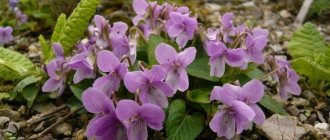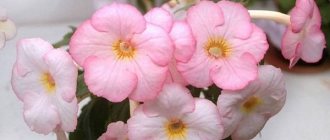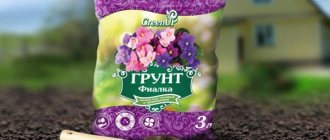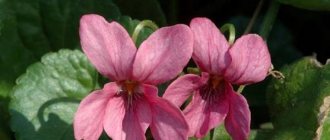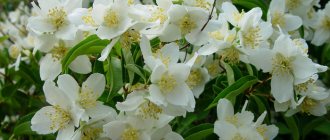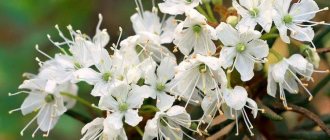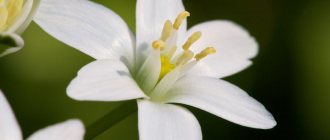Multi-colored pansies, or violas, are an undeniable sign of spring. These are the first flowers in home flower beds, in balcony boxes and pots. The variety of varieties allows you to create colorful compositions from these flowers. They have also been successfully used in herbal medicine for many years. Viola is an extremely colorful and charming flower. In the garden, these are plants that arose as a result of crossing the tricolor violet with other types of violets. Almost every year, manufacturers bring new varieties of these flowers to the market. You can also find wild field plants that have medicinal properties. What do pansies look like? How to plant and care for them? What are the effects of tea with this flower? We'll tell you in this article.
Most popular varieties
Among the pansies that received the greatest popular love are: Freedom, Blueberries with cream, Viola Aurora, Waterfall, Velor, Wittrock Alpensee, Empire, Russian beauties, Evening heat, Ice King, Weiss, Eye of the Tiger, Adonis.
Let's look at each of them in more detail.
Blueberries with cream
This violet is one of the low-growing ones. Its height reaches only 15 cm.
The flower color is dark purple with white edges. This color scheme looks very impressive, which is why such violets are often used to decorate flower beds and borders in urban spaces.
They are also very easy to care for and can withstand low temperatures.
They require loose soil. Planting is done in well-lit areas.
Freedom
This is a small-flowered variety. The diameter of the flowers reaches only 5 cm. The violets fit tightly to each other and grow well. The Freedom variety is unpretentious, frost-resistant and very hardy in the face of adverse weather conditions. It tolerates heat and prolonged downpours better than other representatives of its subspecies (with small flowers).
As a rule, Freedom is grown in combination with other spring flowers.
These violets are not very demanding in terms of care, but they need regular watering and a well-lit place. To ensure denser blooms, it is necessary to remove dried flowers.
Waterfall
This variety is ampelous (violets with long hanging stems), and it is popular in vertical gardening.
This viola is usually grown in hanging pots or containers.
The color scheme of the petals is golden. The size of the flowers reaches 5 cm. It begins to bloom in May and ends in early autumn.
The Waterfall variety is resistant to frost and loves sunlight. The soil under the plant must be constantly moist.
Viola Aurora
This variety is a highly branching compact bush. Reaches a height of 25 cm.
Viola Aurora blooms very profusely. The size of the flower reaches 7 cm. The color of the violet is characterized by variability depending on temperature and lighting.
The viola's petals are corrugated and have a border around the edges. As a rule, it is grown on balconies, but can often be found decorating urban spaces.
Aurora prefers fertile, drained soil. Grows equally well in sun and partial shade.
Wittrock Alpensee
This type of pansy is low. The bushes hardly reach a height of 15 cm.
This violet is unpretentious to conditions, easily tolerating slight drops in temperature. Blooms from May to October, prefers sunny areas and good watering. Most often this variety is grown in balcony containers and garden vases.
Velours
This variety is characterized by small - 20 centimeter bushes with a diameter of about 30 cm. The flowers themselves are small, but due to their close proximity to each other they form a beautiful flower ball. The color is bright and rich.
Velor urgently needs drained soil with high breathability. Grows in both sun and partial shade.
Viola “Velour” is unpretentious and easily tolerates adverse weather conditions. Used as decoration for alpine slides and borders.
Empire style
Refers to a species with large flowers of 10 cm. It is an exclusively decorative variety. Has bright colors. Requires regular and moderate watering.
If conditions are created under which the temperature stays around +16 degrees, then the plant will delight you with very large flowers.
Ice King
This violet grows up to 20 cm in height. The color is white with a slight green tint. The lower petals are decorated with purple spots.
Evening heat
It is appreciated by gardeners as a very beautiful flowering plant. The diameter of the flowers is 5-6 cm, each of which is located on a long peduncle reaching 10 cm.
The flowers are red with a brown tint. Darker spots of the same color can be seen on the petals.
The edges of the petals are wavy. Plant height is 10-15 cm.
Russian beauty
Violets of this variety produce fairly large flowers, reaching a diameter of 8-9 cm.
The bushes themselves are low - about 15 cm. They are unpretentious in care, and can grow even in conditions of a lack of land.
Resistant to cold, grows both in the sun and in the shade.
Weiss
The bush grows up to 25 cm, which is very high for a violet. The flowers reach a diameter of 7 cm.
The color is white with a yellow center. The edges of the petals are wavy.
Adonis
Viola with the fastest and longest flowering. Refers to a species with large flowers. But the bushes themselves are small. The height is only 15 cm. The two upper petals are blue, the lower ones have white and purple spots. As a rule, it is planted in groups.
Tiger's Eye
Medium sized bush. The height, as a rule, is no more than 20 cm. The color scheme is very unusual. Externally, the color resembles a tiger's eye.
It grows into a lush velvet carpet.
The flowers are small in size, 3-4 cm, yellow with textured black stripes.
Tolerates any type of soil provided there is good water permeability and effective drainage.
Characteristics of species
All varieties of violas are conventionally divided into two main groups, since the remaining species are approximately between them.
- First group: with large flowers (diameter 10 cm)
- Second group: with small flowers (diameter no more than 6 cm)
Small-flowered
Large-flowered
Most gardeners are of the opinion that the larger the size of the flower itself, the better. But this is an erroneous judgment.
As practice shows, plants with small flowers turn out to be much hardier than their fellow species.
Small-flowered crops are more adapted for cultivation in the most unpleasant climatic and weather conditions, as they easily tolerate temperature changes, as well as sudden changes in conditions when rainfall suddenly turns into heat and drought.
Also, in defense of small-flowered violets, I would like to note that a dense carpet of such flowers turns out to be even more colorful and bright than when plants with large flowers are planted.
Despite the fact that violas with small flowers have become very popular in the north, gardeners from the southern regions have become very fond of them.
It is worth noting that in hot climates, pansy flowers begin to gradually decrease in size. As a result, by the end of the southern season they become even smaller.
For this reason, small-flowered violas in the south are grown mainly on balconies, and larger varieties are planted in flower beds.
Division by size:
- short;
- medium height;
- tall.
Tall
Low-growing
Depending on the edge of the petals:
- with even petals;
- with a wavy edge.
Smooth petals
Wavy petals
The color palette distinguishes:
- with monochrome coloring;
- two-color;
- with contour blots and stripes.
Planting violas Peculiarities
If you plant pansies without following the rules relating to a particular variety, then you may not expect flowering in the first year.
Planting in the ground should be done only when the seedlings have become strong and fully formed.
As a rule, seedlings are grown at home, starting from late February - early March.
Planting seeds directly depends on the climatic conditions of your region. Therefore, this factor must be taken into account.
Before you start seedlings, study all the information for your region. It happens that some varieties may not be suitable at all for a particular climate zone.
General recommendations:
- Prepare the correct soil.
Pansies do not like acidic soil. Therefore, prepare in advance suitable containers with a slightly acidic soil reaction. The earth needs to be moistened, but without enthusiasm. Subsequently, it is also recommended to ensure that there is no overflow.
Viola seeds are sown in furrows and covered with soil of a small thickness of 4-5 mm.
The small thickness will allow you not to miss the first shoots, which will appear in 4-6 days.
- Monitor the temperature.
Seedlings love cool conditions at temperatures from +17 to +20 C. A few days later, as soon as the first shoots appear, lower the temperature to +13 - +17 C.
- Feed the seedlings.
Fertilizers must be applied during plant growth. You can use an instant fertilizer containing nitrogen, phosphorus and potassium.
- Picking seedlings.
After a short germination, the seedlings must be transplanted into cassettes with a cell diameter of no more than 7 cm.
The timing of the dive depends on the time of appearance of the first two leaves. Not earlier! If there is a need for seating in parts, this is acceptable.
After transplanting, place the finished cassettes with violets in a cool place with a temperature of +10 to +13 C.
As a rule, to ensure such temperature conditions, cassettes with seedlings are placed in a greenhouse. But if you don’t have this opportunity, then a veranda, balcony or window sill will do.
After diving, continue fertilizing following the instructions on the fertilizer package.
- Landing in the ground.
Transplantation of established seedlings is carried out approximately 2 months from the date of first sowing. The timing of the final transplant depends on the variety and condition of the plant.
Plant seedlings at a distance of 10–20 cm from each other, as too close proximity can lead to rotting of the root system and the plant itself.
How to determine whether seedlings are ready for transplanting or not?
As a rule, gardeners look at the number of leaves. On strong, fully formed seedlings there should be at least 4 of them.
In some situations, it is possible to transplant into the ground already at the flowering stage. It's even better for violets.
If everything described above is too complicated for you and is not completely clear, then use garden varieties of tricolor violets.
Such violas do not require intermediate transplantation (diving) into cassettes. Planting in the ground can be done after the first two leaves appear.
Choosing a landing site
It is necessary to plan the place where you plan to plant pansies in advance - even at the stage of choosing a variety.
Some species can grow in the sun and in the shade, and some of them do not like shade at all. But, for the most part, violas prefer well-lit, warm areas. Choose a place where there is sunlight for at least 6 hours a day.
Choose places with shade or partial shade only if the plant variety allows it. During preparatory work, do not add additional fertilizer to the soil. It is enough to choose an area with fertile soil and loosen it well.
Care
If you have chosen the right place, according to the viola variety, and maintain the required level of soil moisture, then the plants will delight you with their lush, beautiful flowering throughout the warm season.
Pansies do not require regular watering. The most important thing is that the soil is always moist. But there shouldn’t be any overflow. That is why, when choosing a landing site, make sure that rainwater does not accumulate or stand there.
If there is a dry spell, water the plants regularly, otherwise they will shrink in size or stop blooming altogether.
Some varieties of viola require additional feeding. If this is necessary for the species you have chosen, then fertilizing the soil only needs to be done twice during the entire season.
Any drugs can be used. The most important thing is that they are suitable for the violets that you plan to breed.
The first feeding is carried out before flowering - during budding. The second is carried out when the violets bloom.
After flowering begins, make sure that there are no weeds, as they can become intermediaries in the transmission of various diseases and infections. Weed regularly.
After flowering ends, when there are practically no leaves left on the plant, cover them with straw, spruce branches, or fallen leaves.
A similar procedure is carried out only for perennial plants. If you planted annual varieties, or varieties that do not require insulation, then there is no need to carry out the procedure.
Carefully study the information about the selected variety.
Growing from seeds
Viola Seeds
The seed method of propagating pansies is quite simple. First you need to choose a sowing time.
It depends on when you want to see the first flowers:
- In order for the plant to bloom next year, it must be sown in open ground in the fall. This should be done in August or September. Viola will have time to sprout and its root system will begin to form. By the time frost sets in, it will be a fully formed bush. Having overwintered, it will give you flowering in April, which will continue until autumn.
- If you plant pansies in the spring, they will bloom the same year they are planted. Here it is necessary to use the seedling method. We will look at it below. This planting is carried out at the end of winter.
- If you sow the seeds in May or June directly into the ground, the viola will begin to bloom in September. Winter will find it blooming, but next year it will bloom again.
Step-by-step instructions for growing seedlings:
First shoots of seedlings
- Before sowing, it is recommended to treat the seeds with a solution that stimulates growth, for example, you can use citron. If the seeds were purchased from an unreliable seller, they need to be disinfected with a weak solution of potassium permanganate.
Pansy seeds can be stored for no more than two years, after which they lose their viability.
- Soil plays an important role. For viola, you can use purchased peat tablets or violet substrate.
You can make the mixture yourself. To do this, garden soil, peat and rotted compost are mixed. The proportion should be 2:2:1.
Be sure to spill the self-prepared soil mixture with a hot solution of potassium permanganate. This will kill any fungal spores that may be waiting in the garden soil.
- Pansy seeds can be sown on top of the substrate or embedded in the soil.
The first method: spread the planting material on moist soil. Cover with film and keep until sprouts appear in a dark place at a temperature of 22 degrees. Every day you need to remove the film for 10 minutes for ventilation.
Second method: Seeds are sown in furrows. The depth that should be is about 0.5 cm. The distance between them must be kept 1-2 cm.
The step between the seeds should also be 1 - 2 cm. After the grooves are sealed, you need to water the viola. Cover with film and place in a warm place.
Such sowing does not require keeping in the dark. The film also needs to be removed every day, for 10 - 15 minutes. Depending on the variety and quality of planting material, the first shoots will appear in 2 - 4 weeks.
Viola seedlings
- After the seedlings emerge, the container with seedlings should be placed in a well-lit place. Viola is not afraid of the spring sun, so the window sill of a south window is suitable for her.
- The film cannot be removed from the seedling container immediately. It is necessary to accustom the seedlings gradually. To do this, you need to increase the ventilation time throughout the week.
- Pansies can feel quite comfortable at a temperature of +5+10 degrees. Therefore, during the day, seedlings can be taken out to the balcony, terrace or yard. Fresh air will contribute to its rapid strengthening and growth.
- Viola needs regular watering. It is produced when the top layer of soil dries. However, you should not overwater, as excess moisture will cause the plant to rot.
- Picking is done after 2-3 full leaves have grown. Transplantation is carried out into separate cups. Viola takes root well, so if the root is damaged, it’s not a big deal. This will not deteriorate the health of the plant, only growth may slow down a little.
- If the stem of the dived pansy has stretched out. It can be deepened into the ground almost to the leaves. This will improve the appearance of the plant and make the root system stronger. New roots will grow on the surface of the recessed stem.
- After several pairs of leaves have formed, you need to pinch the top of the stem. This will make the bush lush.
- Planting in open ground is carried out after stable weather has established, without frost. The distance between bushes should be at least 10 cm.
Pansies tend to self-pollinate
Therefore, you should not be surprised when you see flowers of an unexpected color in your flowerbed. By the way, it can be propagated by collecting seeds.
Sowing seeds in open ground:
- Make shallow grooves. The gap between them should be 10 cm.
- Spread the seeds, keeping a distance of approximately 1 - 2 cm.
- Water the crops and cover with film.
- After the shoots emerge, the film is removed. Seedlings need to be provided with partial shade conditions. For this purpose, a canopy is constructed. Or tree branches with foliage are installed along the perimeter of the bed.
- Transplantation to a permanent place is carried out after the appearance of 3 leaves.
In order for the bushes to bloom profusely next year, it is not necessary to allow flowering in the first year. To do this, all the buds are cut off.
Viola propagation
In addition to planting and care, one more, no less important question remains: how to propagate violets.
There are only 3 possible ways.
Seeds
This method is discussed in great detail in the section on planting seedlings.
Basic moments:
- we plant the seeds in February-March in a container that is located in a warm and bright place;
- We pick up the sprouts two weeks after germination;
- transplant into separate cups, or place in a common container at a distance of up to 5 cm in a checkerboard pattern;
- After 2 months, we transfer the strengthened seedlings to open ground.
Dividing the bush
This method is used extremely rarely. As a rule, it is only suitable for propagating perennial violets.
There are no difficulties in this method. It's simple: one viola bush is divided into two or three inflorescences, then placed in separate holes for further cultivation. When the separated inflorescences feel free, they will grow into full-fledged bushes.
Propagation by cuttings
This propagation option is the most popular, as it can be used for all types of pansies.
For propagation, take green terminal shoots with 2–3 nodes. Cuttings are pruned from May to July. The timing of pruning depends on the specific variety of viola.
The procedure of cuttings and subsequent planting is carried out directly in the garden. The location must be shaded.
All cuttings are planted close to each other to a depth of no more than 0.5 cm.
After planting, the shoots are sprayed and covered with wet paper or newspaper to create more humid conditions. This promotes the fastest growth of the plant.
Propagation by cuttings is best done in warm, dry weather.
Caring for cuttings after planting
After planting, cuttings require daily spraying, weeding and fertilizer.
If everything is done correctly, then within a month the violet shoots will acquire their own new root system.
If you carry out the propagation procedure at the beginning of the summer season, then in the fall you can plant pansies in ready-made flower beds.
If the cuttings were carried out later, it would be correct to leave the new seedlings until spring, covering the planting site with denser material. Plywood works great.
Among the advantages of propagation in this way, I would like to note that in this way the violets are significantly rejuvenated. Already in the 3rd season, new flowers are able to grow into enormous force.
Pansy diseases
Pansy flowers are susceptible to the following diseases:
Cucumber mosaic. The carriers of the virus are insects. The leaves of the flower are wrapped in a roll and torn. The buds look unsightly.
The disease can be prevented by destroying aphids. Infected plants cannot be saved; they are simply uprooted and burned.
Damage to a flower by cucumber mosaic
Root rot. The disease starts from the roots and is transmitted to the entire plant. The color of the leaves changes and the roots turn brown.
Control: pay attention to the composition and acidity of the soil, adjust watering, treat with fungicides.
Flower disease root rot
Bacterial spotting. The favorable environment is cold, damp weather. The roots become overcooled and spots appear on the leaves.
Control: treat the bushes with copper oxychloride; after cold precipitation, collect and burn the infected areas.
Plant damage by bacterial spot disease
Late blight rot. The stems are affected near the very base. The leaves acquire a yellow, then blue tint. If the plant is on the balcony, the plant should be pulled out and burned. Throw away the earth.
Late blight rot on leaves
Powdery mildew. The first signs on the leaves are a white coating, which over time is transferred to the buds.
At the first stage of the disease, these are just spots. They can be easily washed off, but then they increase in size and acquire a denser structure.
The color turns grey. Nitrogenous fertilizers pose a high risk of infection. Control: for preventive purposes, spray the bushes with whey. In case of disease, treat the flower with fungicides, for example Topaz.
Powdery mildew
Medicinal properties of violas
Pansies have long been used in folk medicine.
Tricolor violet has the following beneficial properties: anti-inflammatory, antiseptic, bronchodilator and expectorant, choleretic, antispasmodic.
Violets are used both in pure form and in the form of decoctions and infusions.
Interesting Facts
Edible flowers have made a comeback in popularity in recent years. This is not new, as they have been used in herbal infusions for centuries. So why not add some charm to your dishes? Edible pansies have a sweet, slightly tart flavor and pair well with many dishes. You can buy their seeds or ready-to-eat flowers in online stores.
Many cat owners are concerned about growing these plants due to the perceived toxicity. However, contrary to popular belief, these flowers are not poisonous to animals.
Description of the plant
Pansies are a popular decoration for residential premises and garden plots. Vitroka's violet or viola (a hybrid form, with brighter and larger flowers), as the plant is also called, reproduces by seeds. In Russia it is sown in the ground in the summer, but at home it grows all year round.
Beautiful flowerpots with flowers of various shades are rarely found in apartments. The plant loves open spaces and good lighting. More often there are compositions in hanging pots on balconies.
Experienced gardeners sow seedlings in winter. In their areas, viola begins to bloom in late spring.
For cold regions, it is recommended to grow annual and biennial plants of the Rococo Mix variety. Beautiful velvet buds of various shades reach 6 cm in diameter, bloom from early spring to late autumn. The average stem height is approximately 20 cm.
Forest violets in mythology
People's love and attention to violets is reflected in the mythology of ancient peoples. For example, the ancient Greeks described the appearance of violets on Earth as follows. One day, Persephone, the daughter of Zeus and the fertility goddess Demeter, collected these flowers in the heavenly forests of her father on Olympus. The god of the underworld Hades waylaid her while doing this. He kidnapped the beauty. Frightened Persephone dropped the flowers. That's how they landed on the ground.
The ancient Romans had a completely similar story. Only the names differ. Persephone - Proserpina, Demeter - Ceres, Zeus - Jupiter, Hades - Pluto.
Saddened by the loss of her daughter, Demeter forgot about her duties, she only wandered around, looking for Persephone. And nature began to wither! Then Zeus ordered Hades to let his wife go to his mother for six months. She must spend six months with her husband in the afterlife.
Now that Persephone returns to her mother, everything in nature blossoms. Spring begins, followed by summer. And the sign of this blossoming is the appearance of forest violets. And when she goes to Hades, nature fades. Autumn comes first, followed by winter.
The love of both peoples for violets was expressed both in the fact that these flowers were used for decoration and in the fact that they were used for medicinal purposes. And the ancient Epicureans insisted on violet wine! In Rome, huge violet plantations were even planted for these purposes.
This flower is also in the legends of the Western Slavs! The god Chernobog had a wonderful castle. And he had a beautiful daughter. But Christian missionaries came. They defeated Chernobog and took away his power. The castle turned into a rock, and the daughter into a beautiful violet that blooms once every hundred years. The one who picks this flower will be the happiest of people and will marry the richest bride.
An echo of this legend was the festival of the first violet, celebrated in the Middle Ages in Southern Germany. Forest violets are beautiful plants, and undoubtedly deserve the honor of being immortalized in myths and legends.
With this, I say goodbye to you today, dear reader! Come again. And in order not to miss something new and interesting, subscribe to blog updates, and the announcement of a new article will be sent to your inbox. You can do this in the side column or by clicking on the picture below.
Leave your comment. Perhaps you can add something to what you wrote. Or you have questions for the author, wishes.
Share the link to the article on social networks so that your friends can read it.
I wish you a great mood and more positive emotions! They say it prolongs life.
Best regards, Alexander Silivanov


